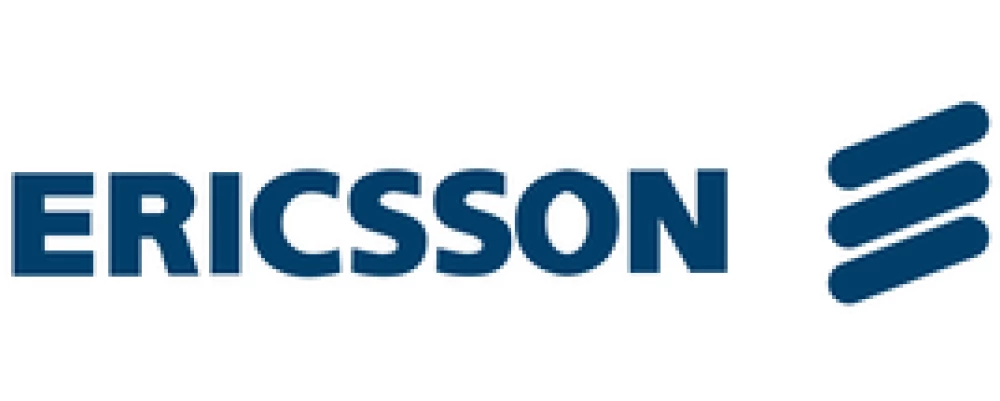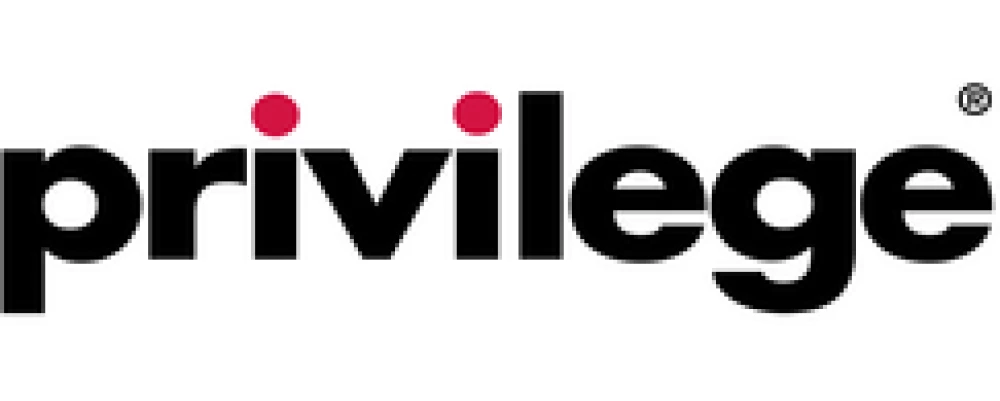Table of Contents
Not all customers are the same – and that’s exactly why customer segmentation is so powerful.
In any business, your audience is made up of individuals with diverse needs, preferences, and behaviours. Rather than treating them as one homogenous mass, savvy marketers break the audience into segments (groups of people who share certain characteristics) to better target their products and communications. Customer segmentation 101 is all about understanding this fundamental concept and learning how to apply it to improve your marketing effectiveness.
In this beginner’s guide, we will introduce what customer segmentation means, explain the different types of segmentation (demographic, psychographic, and behavioural), and show how using segmentation can make your marketing far more effective.
By the end, you’ll see why segmentation is considered a cornerstone of modern marketing strategy – and you’ll be ready to start identifying your own target segments.
What is Customer Segmentation?
Customer segmentation is essentially the process of dividing up your customer (and potential customer) base into smaller groups that have common characteristics, which differentiate them from other groups. Each group, or segment, consists of individuals who are similar to each other in certain ways – for example, they might be in the same age range, have similar interests, or exhibit similar purchasing habits.
The purpose of segmentation is to enable businesses to identify the most attractive or relevant groups to target and then tailor their marketing strategy to each segment. Instead of a one-size-fits-all approach, you can develop customised messaging, offers, and even products for each key segment.
Think of it this way: if you’re a clothing retailer, you likely wouldn’t market the same outfits to teenagers as you would to retirees. By segmenting your audience (teens vs. seniors, in this case), you can create targeted campaigns that speak directly to each group’s needs and preferences. This leads to a much higher chance of engagement and conversion, because the message resonates more. Segmentation acknowledges that we are all unique, but in certain aspects some of us are alike, and those similarities are marketing gold. Without segmentation, you’d either have to generalise your marketing (which can make it bland or irrelevant to many) or attempt to personalise every single customer interaction (which is impossible at scale). Segmentation strikes the balance by allowing mass marketing and personalisation in tandem – you market to groups of individuals rather than one undifferentiated crowd.
Why Segmenting Your Audience Matters
Before diving into the types of segmentation, it’s worth underscoring why segmentation is so important for any business aiming to effectively target its audience. Some key benefits of customer segmentation include:
- More Focused Marketing Strategies: Segmentation forces you to think about who you’re targeting and what they truly need or care about. This means you can focus your marketing strategy on the customers most likely to bring you success. You may even decide to ignore certain groups that are less profitable or not aligned with your business goals. By concentrating resources on the right segments, you avoid wasting effort on long-shots and instead deepen your connection with those most likely to buy from you.
- Tailored Messaging: When you know your segments, you can craft messages that speak directly to each group. A one-size-fits-all advert might not hit the mark, but segmented messaging can address the specific pain points or desires of each segment. For instance, a travel agency might promote adventurous backpacking tours to one segment of young thrill-seekers, while offering relaxing cruise holidays to a segment of older travellers. Each sees a message that feels custom-made, which increases the chances they’ll respond.
- Improved Customer Satisfaction: Segmentation isn’t just about acquiring customers – it’s also about retaining them. By understanding different customer groups, you can ensure you’re meeting their needs more precisely. This could mean adjusting your product features, customer service, or user experience for different segments. When customers feel that a brand truly “gets” them, they are more satisfied and loyal.
- Higher Marketing ROI: Targeted campaigns generally yield better results. By sending the right message to the right audience, you’ll likely see higher conversion rates. This means your cost per acquisition goes down and your return on marketing investment goes up. In other words, segmentation helps you spend smarter. You’re not throwing money at uninterested audiences; you’re investing in those with the highest propensity to engage or purchase.
- Discovering New Opportunities: Sometimes segmentation research reveals an audience segment you hadn’t considered before. Perhaps you discover an emerging group of customers interested in a use of your product you hadn’t marketed for. This insight can lead to new product lines or marketing campaigns. Segmentation can uncover unmet needs in the market, highlighting opportunities to innovate or expand. It essentially provides a roadmap of where to grow, based on real data about distinct customer groups.
In short, segmentation makes marketing more effective and efficient. It underpins the modern move towards personalisation. In fact, without basic segmentation, personalisation efforts can’t get off the ground. By grouping similar customers, you create a foundation on which to build targeted tactics like personalised emails, segment-specific promotions, and more.
Types of Customer Segmentation
There are several ways you can segment a market, but as a beginner, it’s best to start with the three fundamental types that are most commonly used in B2C marketing: demographic, behavioural, and psychographic segmentation.
Another widely used type is geographic segmentation – dividing customers by region or location – but we’ll focus on the first three, which dive into who your customers are and why they act as they do.
Demographic Segmentation
Demographic segmentation is the simplest and one of the most widely used ways to segment customers. This approach groups people based on easily observable traits such as age, gender, income level, education, family status, or occupation. These factors are relatively straightforward to identify and often available through market research or customer data you already have.
Demographics often have a big impact on consumer needs and buying habits. For example, age can influence what products people buy (a 20-year-old and a 60-year-old generally have different fashion tastes), and income affects what price points they can afford or are comfortable with. Because of this, even though demographic segmentation is simple, it can be highly effective. Many marketing strategies start here: you identify a demographic sweet spot for your product. Let’s say you sell high-end baby strollers – your key segment might be new parents in their 30s with a certain income level. That gives you a clear picture of whom to target with your ads and which media channels might reach them (perhaps parenting magazines or Facebook groups for new mums and dads).
Examples:
- Age: Motor insurance companies often design different products for young drivers vs. older drivers. Younger drivers might get offerings emphasising low cost and basic coverage, while older, more experienced drivers are offered premium packages with broader coverage.
- Life Stage: A streaming service might market a family plan to households with children, while promoting a discounted single-user plan to college students. The core service is the same, but it’s packaged and messaged differently depending on the life stage of the customer.
- Income: Fashion retailers may have one brand for budget-conscious shoppers and another for luxury consumers. Each segment sees products and promotions suited to their financial means and aspirations (designer exclusivity vs. affordable style).
In all these cases, the segmentation is based on who the customer is in terms of basic factual categories. Demographic data is usually the easiest to obtain, which is why this method is so popular as a starting point in audience targeting.
Behavioural Segmentation
While demographics tell us who the customer is, behavioural segmentation tells us what they do – specifically, how they behave in relation to your product or service. This approach groups customers based on their actions, such as purchasing habits, product usage rate, brand interactions, and loyalty tendencies. The idea here is to identify patterns in behaviour that differentiate one group from another. Often, these behavioural insights can directly inform marketing tactics.
Common ways to segment by behaviour include:
- Purchase Frequency – How often does a customer buy from you? You might have frequent shoppers (who buy every week, for example) versus occasional shoppers (maybe once every few months). Each group might warrant different marketing: frequent buyers could be enrolled in a loyalty program with perks, whereas occasional buyers might receive reminder emails or special offers to encourage more regular purchases.
- Usage Occasion: When or how is the product used? Take a beverage company: one segment of customers might only buy their drink for special occasions (celebratory use), while another segment drinks it daily as a routine. The marketing to these groups could differ; the daily users might respond to messaging about morning rituals or everyday enjoyment, whereas the occasional users might get ads about making celebrations memorable.
- Channel Interaction: Through what channels does the customer engage? Some customers might predominantly interact online – purchasing via your app or website – while others only buy in physical stores or through phone orders. Knowing this, you can tailor channel-specific strategies (e.g., mobile app exclusive deals for the app users, in-store event promotions for the store shoppers).
- Loyalty and Brand Engagement: You can segment by how loyal or engaged customers are. For instance, brand loyalists who only buy your brand can be separated from brand switchers who hop between you and competitors depending on price or other factors. Loyalists might appreciate a VIP rewards scheme, while switchers might need incentives (like discounts) to stick around. Similarly, you might identify a segment that engages heavily with your social media content versus one that doesn’t – informing how and where you communicate with them.
Behavioural segmentation adds a layer of depth that demographics alone might miss. Two customers might look identical on paper demographically, but one could be a power-user of your service and the other a lapsed user. Obviously, you’d approach each very differently. By understanding behaviour segments, businesses can target interventions more precisely – for example, re-engaging lapsed users with win-back campaigns, or upselling high-usage customers to premium offerings. It’s a bit like observing your customers in action and grouping them by their habits.
Psychographic Segmentation
The third major approach, psychographic segmentation, goes deeper into the psyche of the customer. This method groups people based on their psychological traits: values, attitudes, interests, lifestyles, and personality characteristics. Psychographic segmentation tries to understand the why behind customer behaviour – what motivates them? What do they care about? It’s more complex than demographic or behavioural segmentation because it often requires research to uncover these less tangible traits (through a mix of surveys, interviews, and sometimes advanced analytics or modelling). But the payoff is a very nuanced understanding of your audience.
Key aspects you might consider for psychographic segments include:
- Values and Beliefs: What principles guide the customer’s decisions? For example, one segment of consumers might be very environmentally conscious and value sustainability, while another segment might prioritise convenience or price over eco-friendliness. Knowing this could inform product development and messaging – the first group would respond well to a campaign about your brand’s ethical sourcing and green initiatives, whereas the second group might just want to hear about how your product saves them time or money.
- Lifestyle: This covers a customer’s hobbies, leisure activities, travel habits, social life, etc. For instance, a tech company might identify a segment of “early adopters” – people who love trying new gadgets and stay on the cutting edge – versus a segment of “practical users” who only care about technology that clearly adds convenience to their lives. The early adopters could be targeted with messaging about innovation and new features, while practical users get messages about reliability and usefulness.
- Personality Traits: Some brands even segment based on personality profiles (sometimes using frameworks like the Big Five personality traits or others). Is your customer an extrovert who loves to share experiences, or an introvert who values solitude? Are they risk-takers or risk-averse? These traits can influence how you market. A thrill-seeking personality might be drawn to bold, adventurous marketing imagery, while a cautious personality might prefer detailed information and reassurance.
- Attitudes and Opinions: This can include attitudes towards your product category or related topics. For example, consider the fitness industry: one segment might be hardcore fitness enthusiasts (“gym is life”), while another is casual fitness participants (“I know exercise is good for me, but I do it just to stay healthy”). The enthusiast group might appreciate being part of an aspirational fitness community with challenges and competitions, whereas the casual group might prefer simple, quick workout solutions and encouragement for maintaining a routine.
Psychographic segmentation is powerful because it taps into the emotional and mental drivers of consumer behaviour. If demographic is the “who”, and behavioural is the “what”, then psychographic is the “why”. Understanding these deeper motivations allows for extremely effective targeting. For example, many car companies segment not just by income or age, but by lifestyle and attitude – selling an SUV with rugged outdoorsy branding to one segment, and a sleek city life image to another, even if both groups have similar demographics. The messaging resonates because it connects with the customer’s self-identity and aspirations.
It’s worth noting that effective psychographic segmentation often needs to be combined with demographic or behavioural data to be actionable. You might find a psychographic segment (say, “the eco-conscious foodie”) and then realise they tend to be in a certain age/income bracket and show certain behaviours (they buy organic, they live in urban areas, etc.), which helps you reach them. It’s a more advanced layer of targeting that many brands use to differentiate themselves in crowded markets.
How Segmentation Improves Marketing Effectiveness
Now that we’ve covered the main types of customer segmentation, how exactly does using these segments lead to better marketing outcomes? Let’s break down the ways segmentation can turbocharge your marketing efforts:
- Personalised Content and Campaigns: Segmentation enables personalisation at scale. Instead of sending the same content to everyone, you can create segment-specific content that feels personal to each group. This could be as simple as changing the imagery and headline of an email to suit each segment, or as comprehensive as running separate marketing campaigns for different segments. Personalised marketing messages are proven to yield higher engagement and conversion rates, because customers feel understood rather than sold to.
- Efficient Use of Marketing Budget: When you know which segments are most valuable, you can allocate marketing spend more efficiently. You might discover, for example, that 60% of your revenue comes from a particular segment of customers (perhaps mid-30s professionals who use your app daily). Armed with that knowledge, you’d likely funnel more of your advertising budget towards channels and campaigns that reach similar people, rather than spreading yourself thin trying to appeal to everyone. Segmentation ensures you’re investing where it counts, maximising return on investment.
- Higher Conversion and Response Rates: Targeting leads to relevance, and relevance leads to results. If a customer feels that an advertisement or message is speaking directly to them, they’re far more likely to respond. Contrast this with generic advertising that many people might ignore. For instance, an email campaign that addresses specific needs (“We picked these running shoes just for your marathon training”) will perform better than a generic blast (“Check out our new shoes”). Over time, those improved response rates translate to more sales and growth.
- Stronger Customer Relationships: Segmentation can improve not just one-off sales, but long-term customer relationships. By continually addressing customers in a way that aligns with their segment profile, you build trust and loyalty. Customers appreciate brands that get them. For example, if your communications consistently acknowledge and cater to a customer’s interests (say, a pet supply store always sending tips and deals for the type of pet you own, which they know from your segment info), that customer will feel a stronger bond with the brand. Stronger relationships mean repeat business and positive word-of-mouth.
- Insightful Analytics and Decision-Making: When you track marketing performance by segment, you get clearer insights into what works for whom. Maybe you find that Segment A responds much better to social media ads than Segment B, while Segment B loves your referral discount scheme. These insights allow you to refine each segment’s strategy. It’s like having multiple mini-marketing plans under one umbrella, each optimised for its audience. Additionally, if one segment starts declining (e.g., they’re buying less or engaging less), you can investigate why – possibly leading to strategic pivots such as adjusting your product or exploring new segments to target.
All these factors contribute to a more effective marketing machine. A case in point cited by Brandspeak’s research team is how segmentation drove personalisation for a retail client: by dividing customers into clear segments and tailoring email content to each, the client saw email engagement rates jump significantly, which then led to higher in-store sales for those targeted promotions. It’s a domino effect – segmentation leads to relevant messaging, which leads to happier customers and better results.
Getting Started with Segmentation
For beginners looking to implement customer segmentation, here are a few practical steps to consider:
- Collect Data: Start with the data you have. This might include customer demographics (from account info or surveys), purchase history, website analytics, etc. Even a simple spreadsheet of customers with columns for age, gender, location, and total purchases can be revealing.
- Identify Commonalities: Look for patterns or groups in the data. Do you see clusters of customers with similar attributes or behaviours? For example, you might notice a cluster of young urban customers who mostly buy via your website late at night – that’s a potential segment.
- Define Your Segments: Based on the patterns, give each segment a clear definition and a name (e.g., “Night Owl Shoppers” or “Budget-Conscious Parents”). Aim for segments that are distinctive, meaningfully different from each other, and sizable enough to warrant targeted marketing.
- Profile Each Segment: Write a short profile for each segment – what are their key characteristics, what do they value, and what kind of marketing might appeal to them? This is where you blend the types of segmentation data: e.g., Segment X might be defined demographically (men 18-25), but you also describe their psychographic trait (tech-savvy early adopters) and behaviour (shop primarily on mobile).
- Tailor Strategies: Develop a marketing tactic or two for each segment. It could be a dedicated campaign or just tweaks in messaging. For instance, you might decide Segment X gets a social media ad campaign highlighting the cool, new tech features of your product, while Segment Y (say, older customers) gets an email newsletter focusing on reliability and customer service.
- Test and Learn: Implement your segmented marketing efforts and track the results. See how each segment responds. You’ll likely need to refine your segment definitions or strategies over time. Customer segmentation is not a one-and-done task – it’s an ongoing process of learning and adjusting. Segments can evolve, and new ones can emerge as your business or market changes (for example, a new product might attract a new type of customer you hadn’t targeted before).
Starting with customer segmentation might feel a bit daunting, but even basic segmentation is better than none. You can begin with one or two criteria (perhaps segment by one demographic and one behavioural factor) and get immediate improvements in targeting. As you become more comfortable and gather more data, you can add complexity to your segments.
Conclusion: Know Your Audience to Grow Your Audience
Customer segmentation is a foundational tool in the marketer’s toolkit – especially for those aiming to effectively target and grow their audience. By breaking down your broad audience into defined groups, you gain clarity. You understand who your customers are, what they do, and why they do it, which is incredibly powerful for crafting marketing that truly hits the mark.
For beginners, the key takeaways are: start simple, focus on the most relevant segmentation criteria for your business, and always keep the end goal in mind – serving your customers better. Remember that segmentation is ultimately about the customer. It’s about respecting their differences and not expecting one message or product to suit everyone. When customers feel understood and catered to, they reward you with their business and loyalty.
Finally, if you’re interested in learning more or need assistance, Brandspeak offers a range of Customer Segmentation research services that can help you delve deeper into segmenting your market and even conduct sophisticated segmentation studies. Whether you do it in-house or with expert help, embracing customer segmentation will set you on a path to more targeted, effective marketing.
In a world where consumers are bombarded with messages, those who receive the right message – the one that speaks to them – are far more likely to become your next loyal customer. That’s the magic of customer segmentation, and now you have the basics to start working that magic for your own business.









